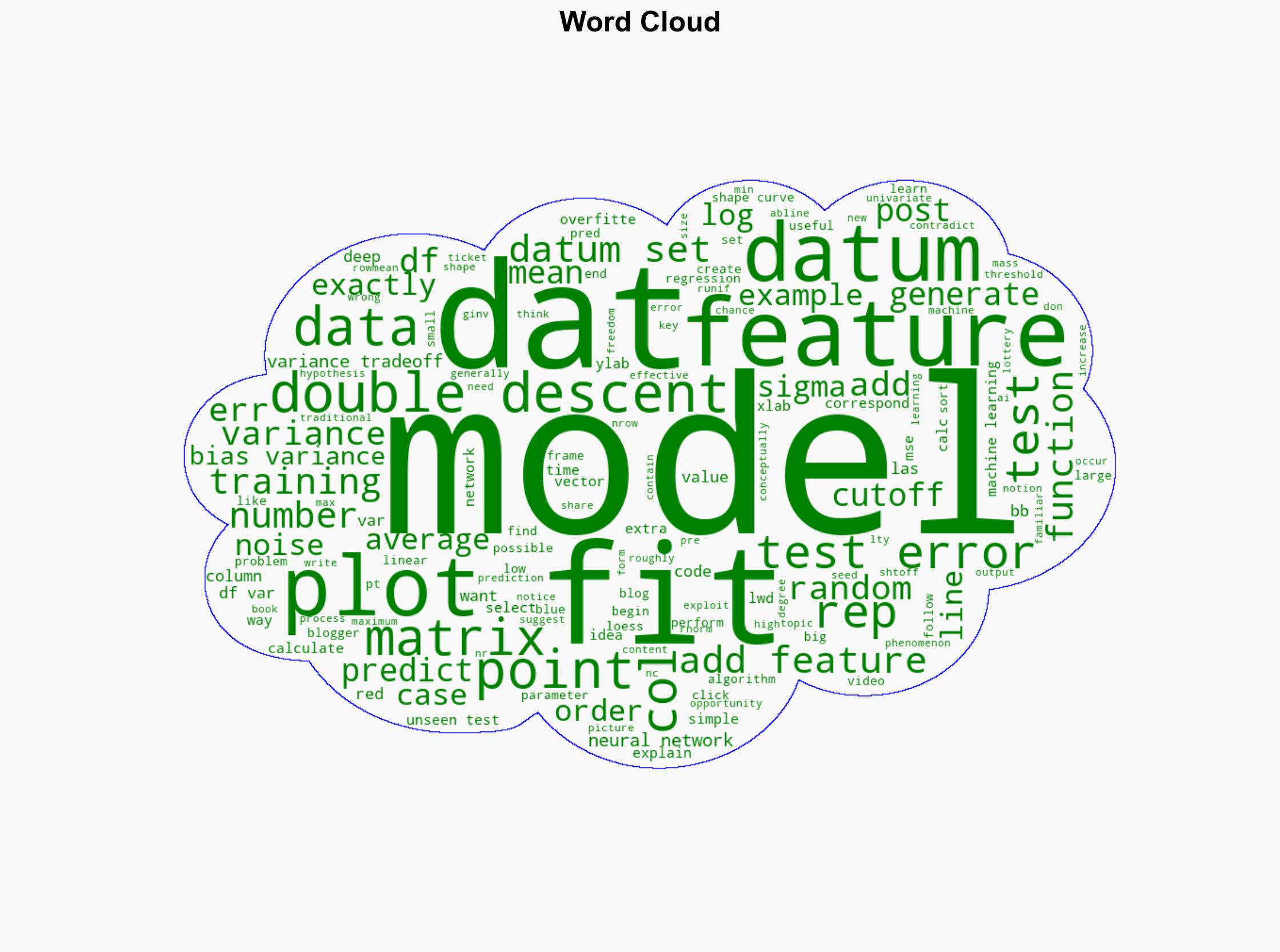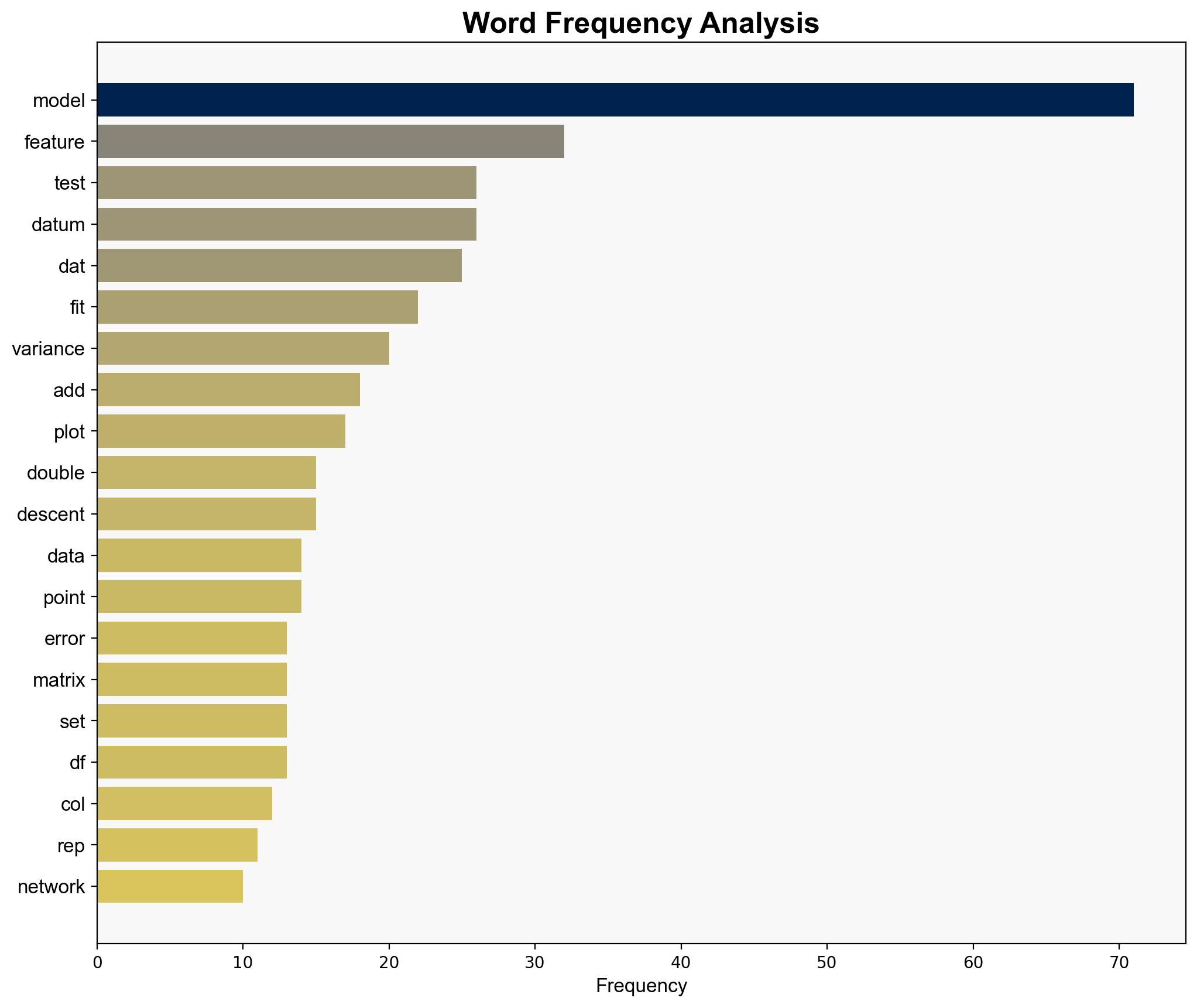Double Descent Explained – R-bloggers.com
Published on: 2025-10-26
Intelligence Report: Double Descent Explained – R-bloggers.com
1. BLUF (Bottom Line Up Front)
The analysis of the “Double Descent” phenomenon in machine learning suggests two primary hypotheses regarding its implications on model performance and data science practices. The most supported hypothesis indicates that understanding and leveraging double descent can significantly enhance model performance, especially in complex neural networks. Confidence level: Moderate. Recommended action: Encourage further research and practical experimentation with double descent in machine learning applications to optimize model training and performance.
2. Competing Hypotheses
1. **Hypothesis A**: Double descent is a critical phenomenon that, when understood and applied correctly, can lead to improved model performance by allowing models to be more flexible without overfitting.
2. **Hypothesis B**: Double descent is a theoretical curiosity with limited practical application, as the conditions under which it occurs are too specific and rare to be broadly useful in real-world machine learning tasks.
Using the Analysis of Competing Hypotheses (ACH) 2.0, Hypothesis A is better supported due to the increasing evidence from empirical studies and the growing interest in leveraging complex models that benefit from double descent characteristics.
3. Key Assumptions and Red Flags
– **Assumptions**: Hypothesis A assumes that the double descent phenomenon is reproducible across different datasets and model architectures. Hypothesis B assumes that the phenomenon is not widely applicable.
– **Red Flags**: There is a lack of comprehensive empirical studies across diverse datasets, which could lead to overgeneralization of the double descent’s applicability.
– **Blind Spots**: Potential biases in selecting datasets that exhibit double descent, ignoring cases where it does not occur.
4. Implications and Strategic Risks
Understanding double descent could transform machine learning practices by optimizing model complexity and performance. However, reliance on this phenomenon without thorough validation could lead to suboptimal models in critical applications, posing risks in fields like cybersecurity and autonomous systems. The phenomenon’s complexity might also lead to misinterpretation or misuse, potentially escalating into broader technological challenges.
5. Recommendations and Outlook
- Encourage interdisciplinary research to explore double descent across various domains and datasets.
- Develop guidelines for practitioners to identify when double descent can be beneficially applied.
- Scenario-based projections:
- Best Case: Double descent becomes a standard tool in machine learning, leading to more efficient and accurate models.
- Worst Case: Misapplication leads to widespread model failures in critical systems.
- Most Likely: Gradual integration into machine learning practices with ongoing research and validation.
6. Key Individuals and Entities
– Alex Shtoff: Contributor to the discourse on double descent with practical examples.
– Welch Lab: Produced a video that inspired further exploration of the topic.
7. Thematic Tags
national security threats, cybersecurity, machine learning, data science, technological innovation




